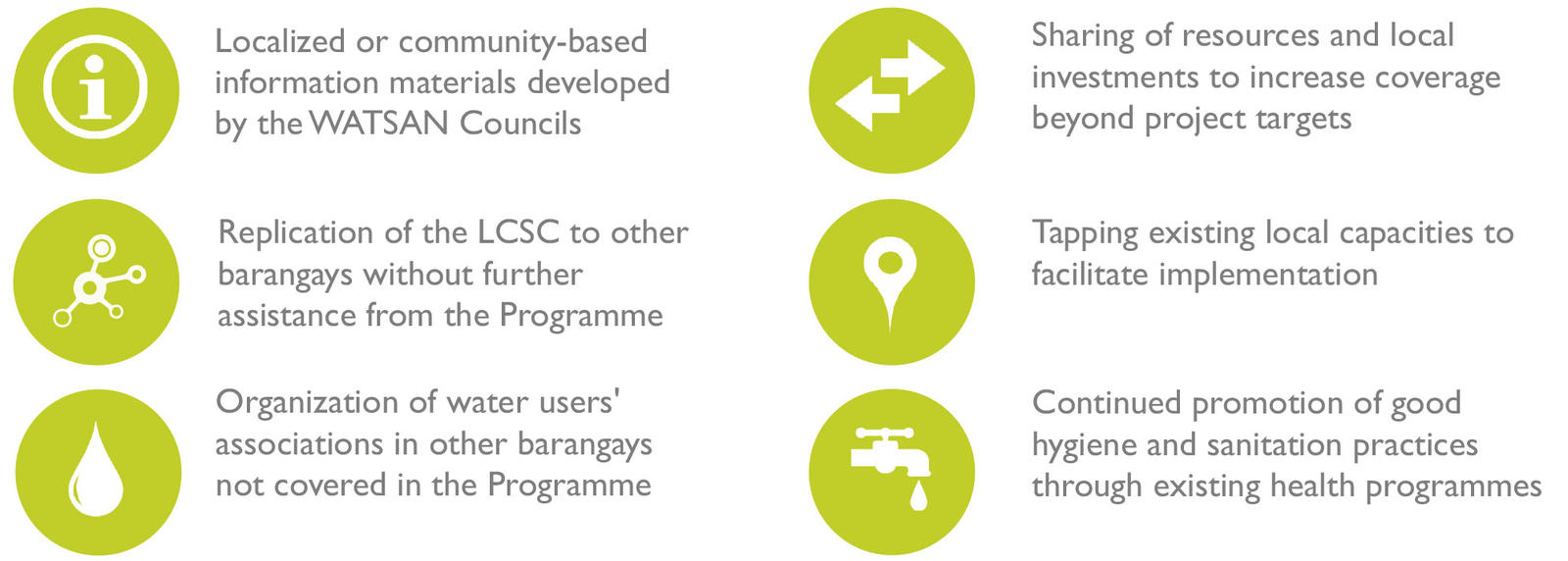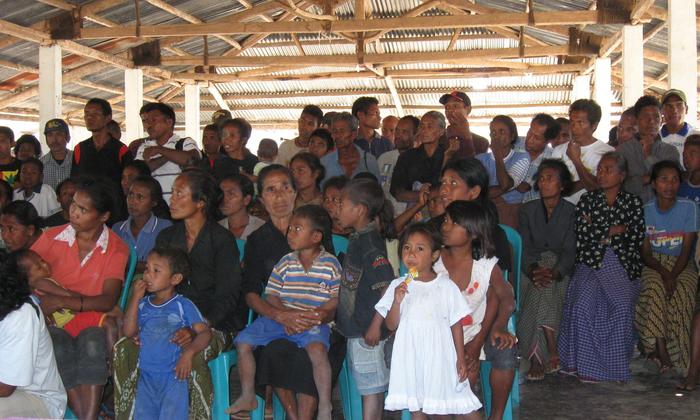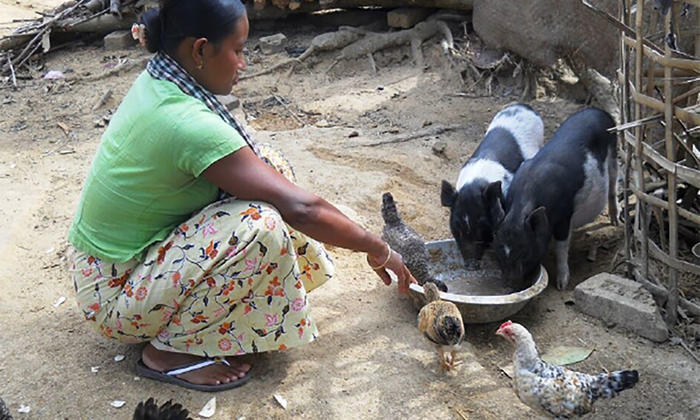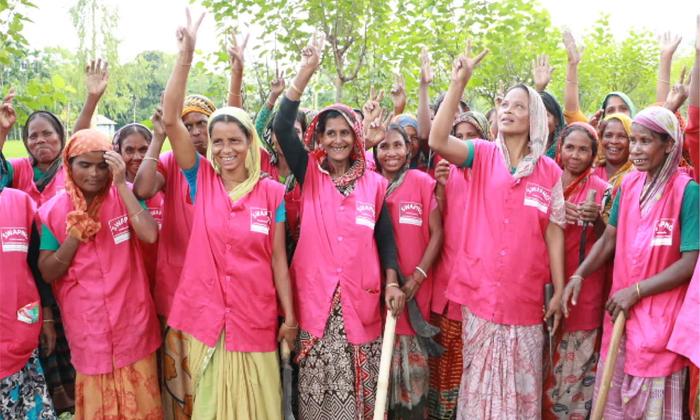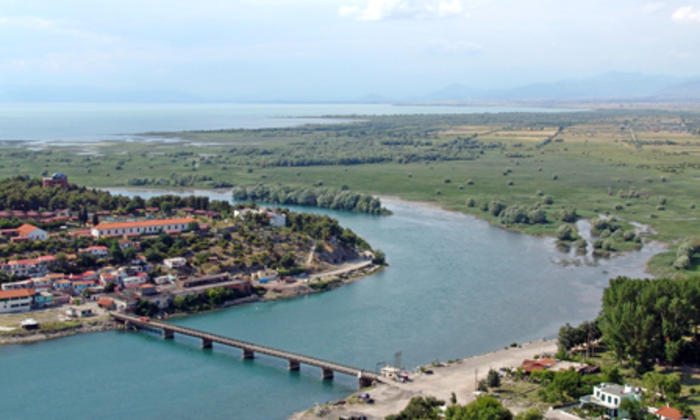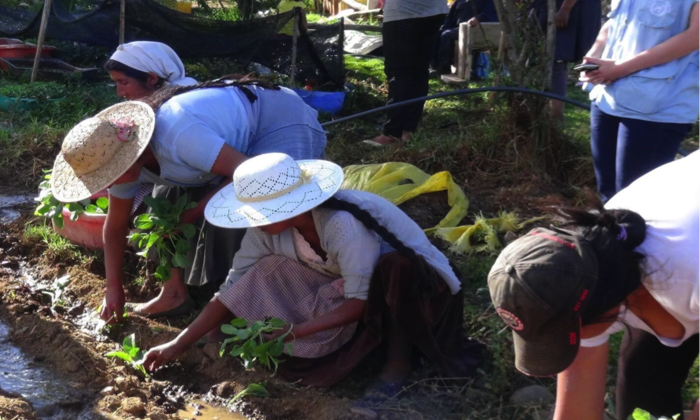The Programme enhanced access to and provision of water services to “waterless” areas in 36 municipalities in five regions of the country. Thanks to this partnership, the municipalities were allotted almost US$ 8 million by the government for water infrastructure projects
Case study
Formulation of a localized customer service code in the Philippines
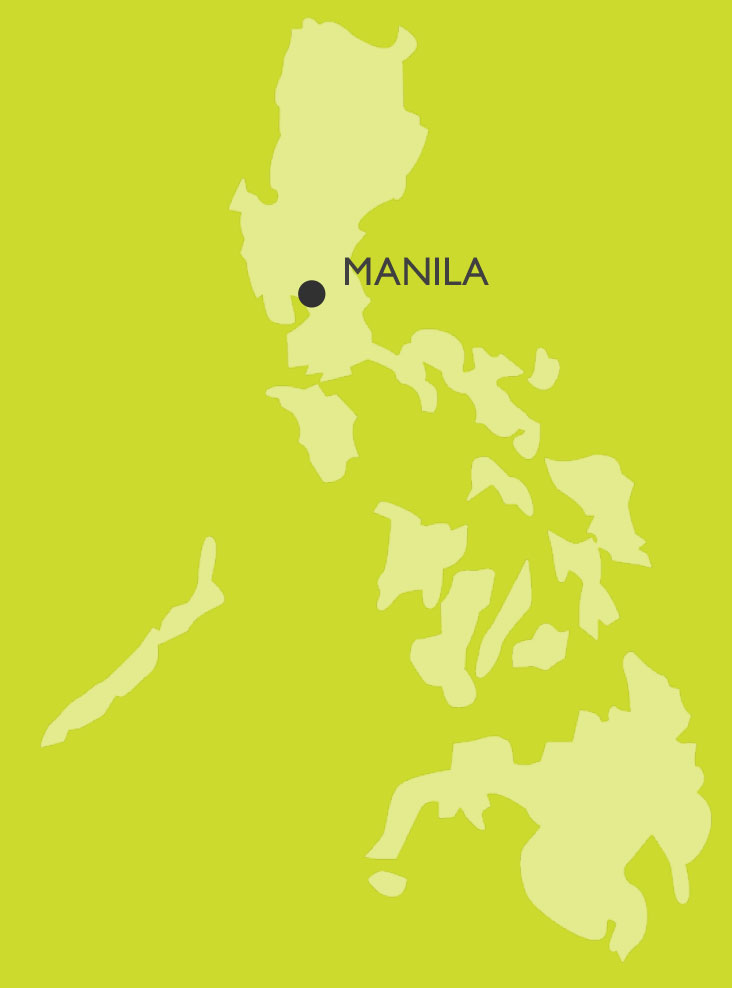
SDGs ADDRESSED
This case study is based on lessons from the joint programme, Philippines: enhancing access to and provision of water services with the active participation of the poor
Read more
Chapters
Project Partners
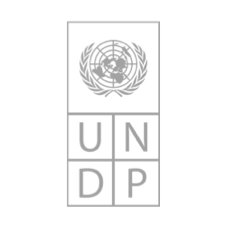
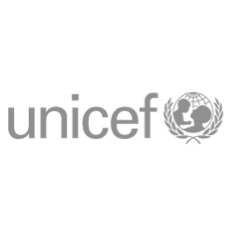
1. SUMMARY
At the beginning of the “enhancing access to and provision of water services with the active participation of the poor programme” (the Programme), some 16 million people in the Philippines did not have access to safe drinking water. The Programme improved delivery of water to 122,000 households by encouraging investment in services for poor communities, increasing local capacities to develop, operate and manage water supply utilities and supporting communications campaigns advocating for "water for all."
The Programme supported community-based initiatives to enhance and establish the sustainable delivery of water in depressed communities in five regions. It focused on increasing the capacity of local duty bearers and stakeholders, particularly women, to demand and sustain the delivery of services.
One of the most successful initiatives piloted by the Programme was the Localized Customer Service Code (LCSC) for small water systems. An LCSC was a binding social contract between a service provider and its customers developed through a consultative and participatory process involving both parties. It reflected the mutually-agreed roles, accountabilities and responsibilities of both the service provider and the consumer in operating and maintaining the water system.
The adoption of LCSCs resulted in improvements in the delivery of water services, including increased connection to water services, reasonable tariffs, more effective collection, higher efficiency in water use, improved quality and availability of service, and more active involvement of consumers in the operation and maintenance of the system.

Children are particularly affected by diseases caused by unclean water, and the effort required to collect safe water keeps many children -- mainly girls -- out of school
2. THE SITUATION
Level II water supply provisions were infrastructures built by the government mostly through a grant. The recipient communities were held responsible for operation and management of the system. However, in most cases, they did not have the capacity manage the system by themselves.
A major problem in the Level II water supply delivery was therefore not the installation of infrastructure but sustaining these services and providing better coverage. Insufficiency or total lack of potable water supply in the local community caused adverse health effects and inhibited social and economic growth.

Monitoring visit
3. STRATEGY
The formulation of LCSC complemented a previous initiative where a Customer Service Code was developed for the National Water Resources Board (NWRB) regulated Level III Water Service Providers (WSPs). The existing NWRB Customer Service Code for Level III water service providers was one of its tools for regulation. Under the Programme, the code was reviewed and its applicability or non-applicability to Level II WSPs was validated, through the active participation of stakeholders and integrating the key concepts of a) gender non-discrimination b) participation and empowerment c) integrity, accountability and transparency d) human rights and human dignity and e) justice under the rule of law.
The applicability/non-applicability of the existing NWRB Customer Service Code to Level II WSPs was assessed, taking into consideration the different types of WSPs (i.e., cooperatives, Local Government Unit-run, Rural Water and Sanitation Association, Barangay Water and Sanitation Association, and other entities).
The main strategy was the piloting of the project to five qualified Level II water service providers, from which a template and a manual for roll-out was developed. Criteria for the selection of WSPs for replication was also formulated.
The NWRB Team, during the consultation phase of the Programme, took the opportunity to educate both the WSPs and the consumers about the Water Code of the Philippines, the importance of the watershed management and the general principles behind the LCSC. The WSPs were given the opportunity to explain their local policies, plans and programs in their local dialect so that these would be clearly understood by the audience.
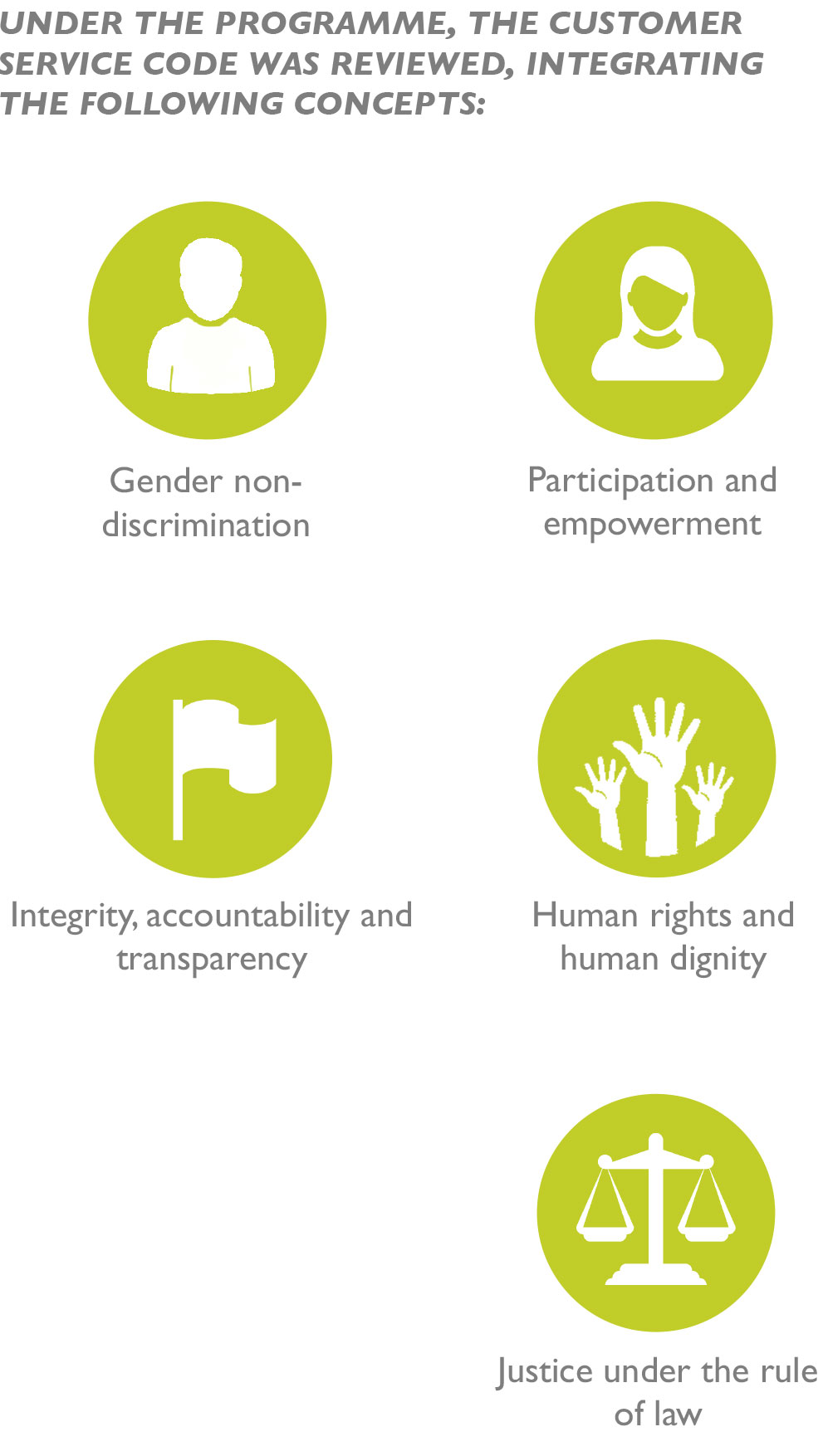
4. RESULTS AND IMPACT
Thirty-six LCSCs were formulated, adopted and implemented in the Programme. Their adoption positively impacted the sustainability of water facilities as a result of more efficient use of water and increased collection efficiency, membership, and participation of consumers in the management of the system.
The community members where the LCSC project was conducted benefitted from the instructional approach of the project team. One form of capacity building was the development of service codes. The formulation of a LCSC for Level II WSPs proved to be a tool for empowering both the provider (e.g. LGU, cooperative, RWSA, BWSA, private) and the users (communities) of the Level II facilities towards improvement of efficiency, access and quality of potable water services. Rights and obligations of both the WSPs and the customers were defined with agreed expectations for levels of service and enabled customers to play an active role in the operation and management of the water supply system. Best practices of other WSPs documented by NWRB were shared with all parties for possible adoption in their water system.
While not specifically targeted in the Programme, having access to a reliable water supply was seen to contribute to better health of women and children, and enhanced economic, recreational and other self-development activities for women. Women had more free time from not fetching water over long distances and not having to care frequently for sick family members beset with water-borne diseases.

One out of every five Filipinos does not have access to potable water. The Programme focused on the wellbeing of Filipino children, starting with the provision of safe water to 122,000 households across the country
5. CHALLENGES
One of the main challenges the Programme faced at the outset was promoting the increased participation of indigenous peoples and other vulnerable groups (e.g., women, children, and the elderly) and exercising the same rights and obligations on water use. In municipalities where there was a large population of indigenous peoples (40- 60 per cent), generating interest and participation was a key challenge. What was remarkable during the project implementation was the interest and cooperation generated among indigenous peoples, not only as beneficiaries but as co-implementers of the activities.
The Programme adopted a human rights based approach (HRBA) in the design and implementation of its activities. At the outset, the Programme focused on waterless municipalities, which were in typically poor rural areas. As they were considered non-viable investment areas for private sector and water districts, it usually fell on the LGU to provide water supply services to the population. Hence, the Programme deliberately engaged the LGUs to be involved as beneficiaries/trainees and as local implementing partners.
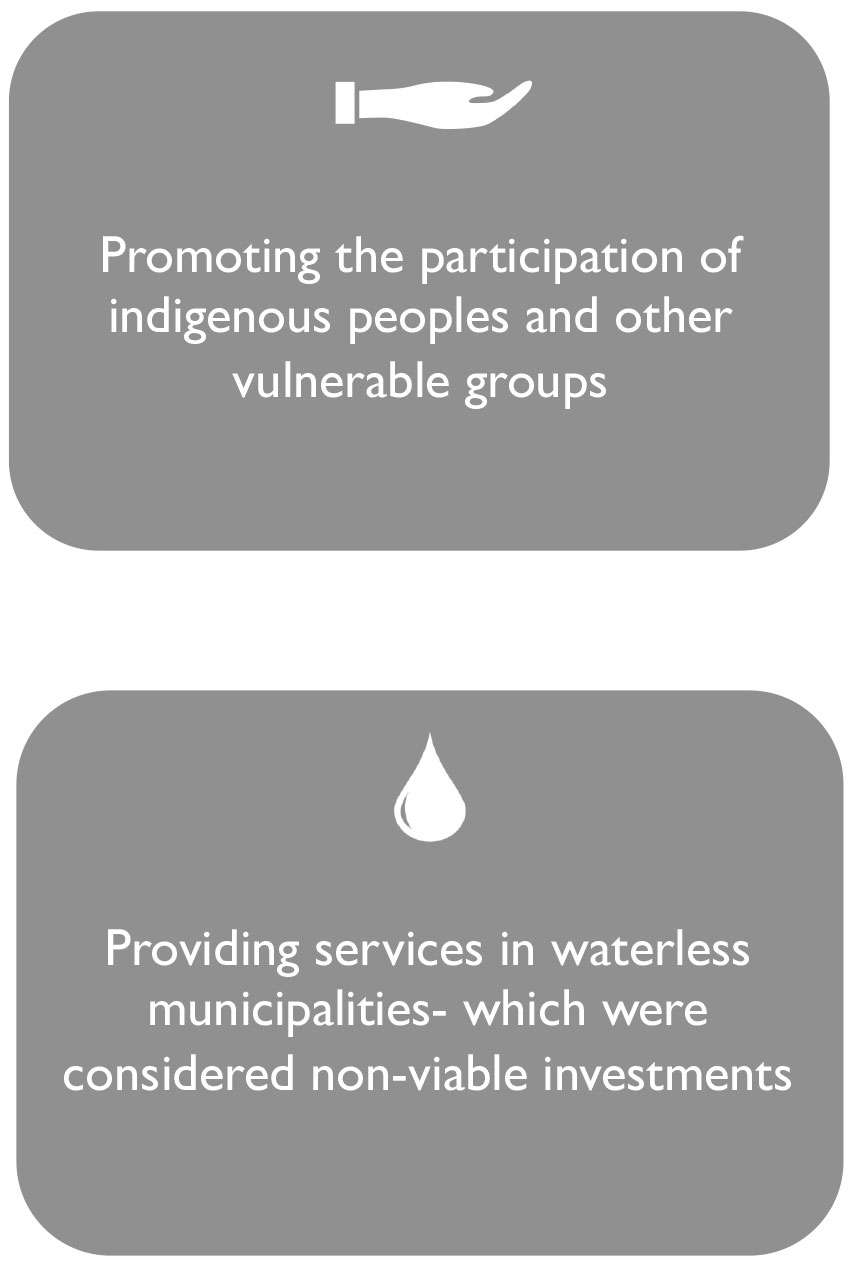
6. LESSONS LEARNED
The most valuable lessons learned during the Programme were:
- As the LCSC was a mutually agreed-upon contract between service providers as duty bearers and consumers as claim holders, its formulation was critically dependent on dialogue between both parties and consensus on what should be included in the LCSC.
- It was helpful that the LCSC handbook of rights, duties, and obligations of the parties was expressly provided, which allowed for mechanisms for complaint and dispute resolution.
- The LCSC was adopted as a local ordinance by way of resolution in the local government unit concerned. The LCSC was the social contract between the parties regarding the use and operation of water utility in the local community.
- Change in perspective and behaviour towards water and sanitation: water as a basic right, protection of water sources, sustainability of water systems, and the practice of good hygiene and proper sanitation, among others. Prior to the Programme implementation, LGUs revealed that their attitude towards water was one that was negligent primarily because they viewed water as free and unending. Beneficiaries came to accept that in order to sustain water availability, there was a need to pay basic fees to maintain water supply facilities and protect their water sources, and the obligation to conserve water. At the community level, the Programme cultivated ownership (as co-implementers) to the project and renewed their trust and confidence in water service providers.
- Citizens' organizations or users' associations were organized in the 36 municipalities. The empowerment of communities/users' associations (which included women, the elderly, persons with disabilities and indigenous peoples) to claim their rights was a primary concern of the Programme. Their enhanced participation in understanding their situation and the awareness of their rights was crucial to engage productively in the decision making process with local government units. This process helped establish transparency and accountability and promote justice in water service delivery.
- The Programme provided demonstrable evidence that the poor were willing and able to pay for water supply services, as long as there was sufficient transparency and accountability in the governance system, as well as effective community mobilization. When the community actively participated in running their own water systems, there was increased accessibility and fee collection. In addition, communities also demonstrated that they were capable of transferring knowledge to other waterless communities through mentoring and 'god-parenting’.
7. SUSTAINABILITY AND POTENTIAL FOR REPLICATION
The lessons learned in the Programme could be employed in many other endeavours of public service. Other water service providers should allow the customers to participate in decisions affecting water supply, specifically in determining the appropriate levels of service. This would lead to the resolution of conflicts related to tariffs.
It is important to increase local capacities in the areas of organizing water user associations, development of localized customer codes, localized IEC materials on water and sanitation, and development of project proposals, among others. The majority of the LGUs have said that they can replicate the project interventions on their own. Specifically, replication can happen in mobilizing the communities to partake in the implementation process, organizing water user associations, developing LCSCs, and conducting orientation and trainings on water and sanitation advocacy. The majority of the LGUs have already expanded areas of coverage developing LCSCs, and organizing barangay water associations and/or cooperatives to manage and deliver water services. Service providers have acquired capacities in record keeping and financial management.
With increased local capacity, LGUs are more confident to continue with the project interventions on their own and explore other opportunities through other financing sources. In advocating for water and sanitation, municipalities have developed their own local information materials to conduct trainings and orientations, and these are gradually being integrated in their existing local programs. With the previous success in the target barangays where the LCSCs were initially developed, many LGUs have decided to adopt and replicate the LCSC to ensure sustainability of the water facilities in other waterless barangays. Furthermore, local ordinances were passed to facilitate implementation and prioritize water and sanitation projects and related programs (e.g., watershed protection).
Local partners have also reported that they continue to conduct activities, such as preparation of LCSCs, community organizing and mobilization, and advocacy on their own through trained personnel during the program implementation. They were creative and resourceful in integrating Programme activities in their own work program and regular activities. The following are some examples:
